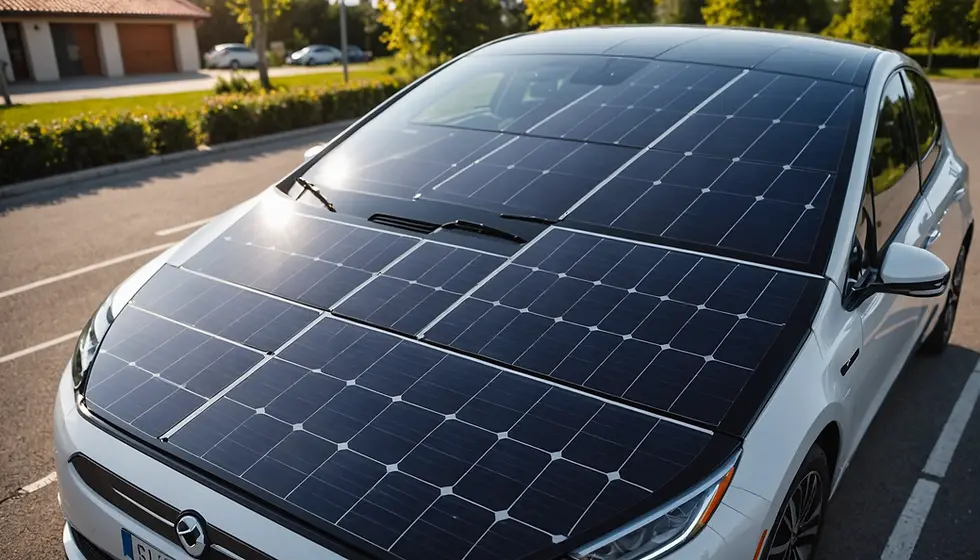Redefining Mobility: How Self-Charging Electric Vehicles Will Transform the Automotive Industry
- Menno Drescher

- Sep 4, 2025
- 3 min read
The automotive industry is on the verge of a remarkable change. With increasing emphasis on sustainable and efficient transportation, self-charging electric vehicles (SCEVs) are stepping into the spotlight. These vehicles promise to tackle the typical frustrations faced by traditional electric vehicle users, offering a clearer path to eco-friendly driving. In this blog post, we examine what SCEVs are all about, the challenges they overcome, and how they could reshape the automotive world.
1. Executive Summary
The SCEV Initiative is an ambitious plan to create electric vehicles that eliminate range anxiety and the inconveniences tied to traditional charging. By employing advanced energy-harvesting technologies such as optimized regenerative braking, solar panels, and electromagnetic induction systems, SCEVs aim to deliver an exceptional driving experience.
This initiative fits into a broader goal: pushing the automotive industry toward sustainable, energy-independent solutions. Experts anticipate a solid return on investment (ROI) within eight years after launching, allowing SCEVs to seize up to 20 percent of the premium electric vehicle market by 2031, firmly establishing themselves as pioneers in transportation innovation.
2. Problem Definition & Business Need
Even as electric vehicles grow in popularity, certain barriers hinder their widespread acceptance. One major concern is range anxiety—the fear of depleting the battery before reaching a destination. A survey conducted by AAA found that nearly 60 percent of drivers would feel anxious about running out of battery during a trip. Compounding the issue is the current landscape of charging stations, which remains underdeveloped in many areas. This shortfall can add stress for drivers who rely on public charging options.
Successfully addressing these challenges is vital for capturing a significant market share and establishing leadership in the sustainable transportation sector. The SCEV Initiative aims to directly tackle these issues, aligning consumer needs with more sustainable choices in mobility.
3. Proposed Solution
The SCEV is designed to utilize a blend of innovative technologies that will facilitate continuous charging while driving. Key features include:
Optimized Regenerative Braking: This system recovers energy lost during braking, rerouting it to recharge the vehicle’s battery. Studies show that such systems can enhance vehicle efficiency by 15-25%, depending on driving conditions.
Photovoltaic Energy Generation: By integrating solar panels into the vehicle’s design, SCEVs can harness sunlight effectively. It is projected that these panels could provide up to 30% of the energy required for city driving, reducing dependence on public chargers.
Suspension and Maglev Energy Harvesting: Advanced electromagnetic induction technology will convert kinetic energy from vehicle movement into electrical energy. Some estimates suggest that this could generate enough power for daily short trips, adding convenience and sustainability.
Intelligent Power Management and Real-Time Data Display: An advanced battery management system will track energy consumption and generation, giving drivers real-time updates. This feature can lead to smarter driving habits, promoting energy efficiency.
The target market includes premium electric vehicle manufacturers and high-performance automotive brands, aiming to meet the growing demand for innovative and sustainable mobility solutions.
4. The Future of Mobility
Self-charging electric vehicles will transform how we experience driving. By tackling range anxiety and minimizing the need for charging stops, SCEVs empower consumers to adopt electric mobility confidently.
The integration of these advanced technologies not only makes driving more convenient but also significantly lowers the carbon footprint associated with gas-powered vehicles. According to estimates, SCEVs could reduce carbon emissions by up to 70% compared to traditional vehicles, contributing positively to global efforts against climate change.
5. Market Potential and Growth Opportunities
The market potential for self-charging electric vehicles is expansive. Consumer awareness of environmental issues is on the rise, and the demand for sustainable transportation options is projected to grow at a rate of approximately 20% annually over the next decade. By positioning the SCEV as a premium product, the initiative is set to capture a large share of this expanding market.
In addition, the SCEV Initiative holds several avenues for growth. Collaborations with renewable energy companies, partnerships with tech innovators, and investment in research and development can enhance vehicle efficiency and market reach. As the automotive industry increasingly shifts toward electrification, SCEVs will play a vital role in this evolution.
A New Era of Transportation
The SCEV Initiative represents a pivotal moment in the automotive landscape. By addressing challenges like range anxiety and charging infrastructure, self-charging electric vehicles have the power to change our perspective on mobility. Commitments to sustainability and innovation are at the heart of the project, providing an enriched driving experience and contributing to a cleaner future.
As we look ahead, the integration of new technology and eco-friendly practices will redefine the automotive industry. This journey towards energy-independent mobility is just beginning, and the SCEV Initiative stands ready to lead the way.




Comments